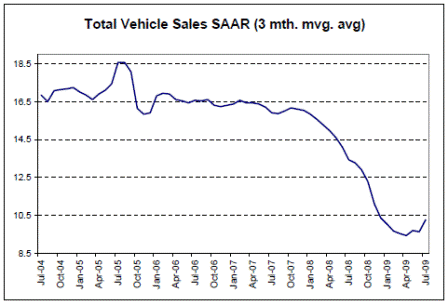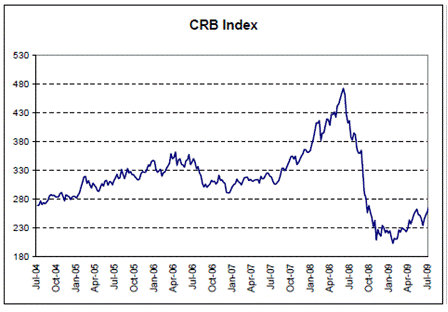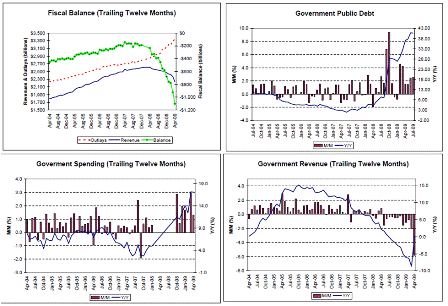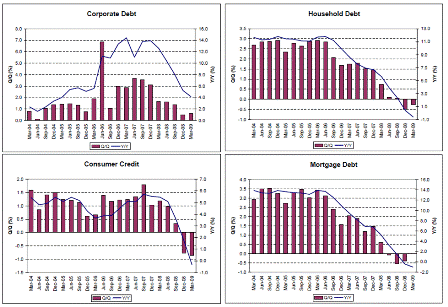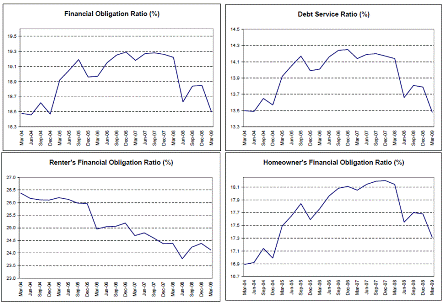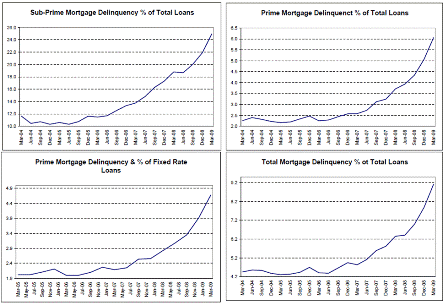>
> On Thu, Aug 20, 2009 at 4:11 AM, Marshall wrote:
>
> Maybe the BofE is having problems because it is looking at this through the wrong
> monetary paradigm. All QE is doing is switching one form of debt term structure
> for another, not actually contributing to aggregate demand. If they figured that
> out, they wouldn’t be “struggling” here.
>
True, hopefully this is what it takes, globally, to finally recognize with a non convertible currency the direction of causation is from loans to deposits and reserves, and that at the macro level banking is in no case reserve constrained, for all practical purposes.
And from there it hopefully follows that govt. spending is in no case inherently revenue constrained. But I suppose that could take another hundred years at the current pace of discovery.
> >
> > I would make it even simpler. QE per se does NOTHING to contribute to aggregate
> > demand and should therefore be stopped and replaced by fiscal policy which does
> > contribute to aggregate demand. Ironically, the last BOE minutes showed King
> > voted for increasing QE purchases beyond what most other MPC members were
> > prepared to support, yet this is the same guy who has railed against the
> > government’s “excessive” spending.
> >
> > But, you’re right. At the current pace of discovery, we might not get there until
> > our grandchildren are 6 feet under.
> >
Bank struggles to gauge if QE is taking effect
By Norma Cohen
August 20 (FT) — The Bank of England’s monetary policy committee appears united in the conviction that its unconventional approach to boosting Britain’s economy has -further to run.
But by how much, for how longand, crucially, knowing when enough is enoughare much thornier questions, judging by the debate revealed in the minutes of its latest meeting this month.
After the Bank announced its surprise move to increase the gilts purchase programme to £175bn – raising the authorised amount by a further £25bn – most analysts chalked it up as an “insurance” measure, an added fillip just in case the massive cash injections to date fell short of what was needed.
But now it emerges that the MPC is deeply concerned about whether the nascent recovery suggested by a range of recent economic indicators is sustainable – particularly since there is little evidence that the £125bn spent between March and the end of July has delivered additional lending.
“The aim of the MPC’s programme of asset purchases was to boost nominal spending to ensure that it was consistent with meeting the inflation target in the medium term,” the minutes noted. That is another way of saying that the MPC wants to offset the collapse in demand by making money cheaply and easily available, hoping that households and businesses will spend it and ward off a deflationary spiral.
Yes, not realizing funding is always easily available to the banking system at the policy rate.
However, just how the gilts purchases would achieve that is the subject of much debate. Judging the efficacy of the programme is equally problematic. After all, the MPC is engaged in a policy untested in the UK, or indeed in almost any other developed economy.
By one key measure, there is little sign that the purchases, known as quantitative easing, are having any effect. There is little sign that the M4 money supply – the broadest measure of money flowing through the economy – is expanding.
Brian Hilliard, an economist at Société Générale, said that in theory QE ought to be effective. “If you are a monetarist, a deficiency of nominal spending can be righted by injecting a given sum,” he said. Through various channels, that money should work its way through the economy and help boost demand for goods and services.
If anyone knows him, please send this along. There are no ‘various channels.’
The minutes note that an expansion in money supply would help the MPC determine when or whether QE was working. However, the committee acknowledges that there is “unlikely to be a simple, straightforward mapping between asset purchases, monetary growth and nominal spending”. That may be one way of explaining the fact that, despite huge cash injections, M4 showed only insipid growth between the first and second quarters of 2009.
Not true either. That can come from increased borrowing due to govt. deficit spending, technical shifts in liabilities, and other things unrelated to QE.
Michael Saunders, an economist at Citigroup, noted the reference in the minutes to a pick-up in broad money growth in the second quarter – to a 3.7 per cent annualised rate from a 3.3 per cent rate in the first quarter. The growth, he said, amounted to a quarterly expansion in M4 of roughly £1.8bn. “So £125bn of QE has caused broad money growth to accelerate by £1.8bn. That’s a pretty poor rate of return,” he argued.
He could use an email as well.
It didn’t even cause that. And it’s not a ‘rate of return’ because it isn’t an investment.
Equally, it is not clear how the MPC is deciding how much money it should inject into the economy. In the minutes of its March meeting, the MPC estimated that since the UK’s output gap – the shortfall between what the economy could produce and what it is actually producing – was about 5 per cent of gross domestic product, an equivalent amount should be injected through QE. In round numbers, that amounted to £75bn, the sum initially authorised.
As if there was some channel for that to actually happen.
One disclosure that emerges from the minutes of this month’s meeting is that the MPC has abandoned that numerical equation. There is no discussion within them on how to judge the additional sums needed for QE. The impact of a cash injection of £175bn, compared with the £200bn favoured by Mr King, is not spelt out.
Mr. King needs this emailed to him as well. He seems further off the mark than any of the others.
There is general agreement that looking at money supply alone to gauge the success of QE may produce too narrow a perspective. A recent analysis of the Bank’s QE programme by the International Monetary Fund concluded that, by many measures, it was having beneficial effects, but it also noted that there was uncertainty on how to judge such success.
“The significant uncertainty surrounding the transmission of QE – explicitly acknowledged by the MPC – would seem to caution against relying too much on any such numerical assumptions,” the IMF concluded.
And another email to the IMF, thanks!
Bernanke seems to at least recognize that the channel of consequence is the adjustment of long term interest rates, and not the quantity of reserves, though the FOMC hesitates to fully go there by setting a target term structure of rates and letting the quantity of reserves adjust.
[top]



